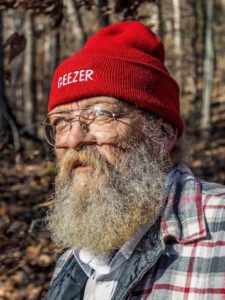

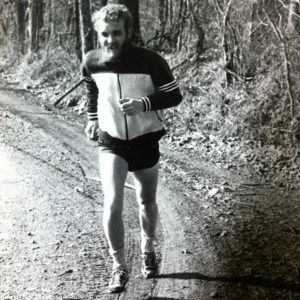

In 2015, he engineered A Race for the Ages, which favored older runners. In the first eight years, four of the winners were over sixty-five. In 2011, he created an entirely new format of race – The Backyard Ultra – a 4.167-mile loop to be run every hour starting on the hour. In ten years, it had spread to over 70 countries around the globe, from Laos to Morrocco to Mauritius. Buttressed by a robust golden ticket and national qualifier system, it set the stage for team and individual competitions. Its success was also in the numbers. At his 2023 Backyard Individual World Championship 72 runners made 100 miles in 24 hours, 47 of those made 200 miles in 48 hours, 23 made three days and 300 miles and eight made 400. Never had there been so many people reaching those milestones in a single race. And both in 2019 and 2020, female runners bested their male counterparts.
In 2020, COVID shuttered his races, but Cantrell responded by creating virtual events. His virtual “backyard” was covered by Sports Illustrated, and his virtual run across Tennessee saw nearly 20,000 participants. But it was back in 1986 that he created his most famous crucible, a race truly like no other: The Barkley Marathons.
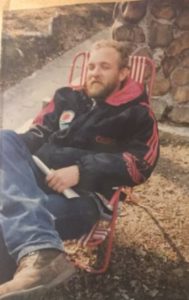

The race began as a small 55-mile affair but would become a five-loop, one-hundred-plus mile media monster. Books hidden in the woods would serve as unmanned checkpoints. Pacers would be barred. Runners would be stripped of their GPS. His magnum opus sought to challenge the very limits of human potential and would garner major news coverage from HBO, CNN, The Washington Post, The New York Times, and The Guardian. It reached international fame in 2014, when a documentary was released named after one of Cantrell’s sayings: The Race That Eats It’s Young. The Barkley Marathons would morph and shift and reinvent itself each year. Somewhere along the way, so would Cantrell. In certain forums, he became known as Lazarus Lake, and soon a mythic persona emerged, manning the yellow gate at Frozen Head State Park in a race so difficult only seventeen runners had ever finished. With a seaman’s beard, flannel shirt, and “Geezer” toboggan, he became the image of a mad Melvillian character – Ahab at the mast – sending runners “out there” in hunt of the white whale Moby Dick. Hidden behind the veil, was the creator.


Born in Texas, Cantrell grew up in Oklahoma and middle Tennessee. The son of an aerospace engineer, he was a voracious reader, lover of sport, and a jigsaw puzzle fanatic. He longed to better his father at something, anything. When he was twelve, the two went to the high school track to run a mile, and young Gary won; he was finally good at something. He would run on his high school track and cross country teams, become a marathon runner in his twenties to offset his five-pack-a-day habit, and eventually participate in 24-hour, 48-hour, and six-day races. In 2018, at the age of 63, he completed his first trans-con, walking 3,331 miles from Newport, Rhode Island to Newport, Oregon. The following year, he trekked North to South, from the Great Lakes to The Gulf of Mexico.
However, Cantrell spent the majority of his life as a coach, devoted to the fundamentals of sport. In the 1990s, while working as an accountant and raising three kids, he created a travelling basketball team for elementary school students. He ran two practices a week for fifteen years, driving the kids in his van to games he organized with neighboring city programs. He volunteered for 25 years as an assistant coach for the Cascade High School basketball team with stints coaching baseball and cross country. After the seasons, he would write booklets for the players, summing up the season. When his races finally began to make money, he gave back to local school programs, and funds raised in the 2019 virtual race across Tennessee provided $250,000 to food banks and $30,000 to animal rescue groups.
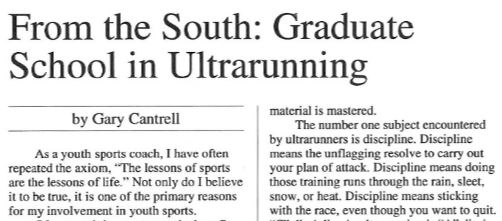

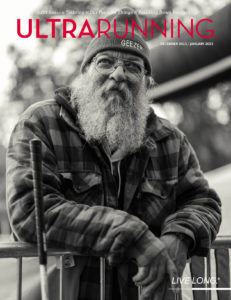

The unique creations of Gary Cantrell include: The Barkley Marathons, The Last Annual Vol State, A Race for the Ages, Big’s Dog’s Backyard, Little Dog’s Backyard, The Last Annual Heart of the South, The Third Circle of Hell, The Idiot’s Run, The Two-Bit Marathon, The Nick Marshall Cup, The Strolling Jim, and The Barkley Fall Classic.
The above tribute was written by Jared Beasley
Read a new article about Gary Cantrell’s early years before The Barkley Marathons.
Hall of Famer, Dan Brannen added:


You’ll hear from him (with never a doubt of full sincerity and compassion) that he understands and feels your pain, but in the blink of an eye, he’ll disqualify you for an infraction of a rule—even though you didn’t intend it. He is a man of ruthless, sometimes disarming authenticity and integrity, and he exudes and disseminates (with an amazingly humble demeanor, a chuckle, and a gentle arm around your shoulder) those qualities as far as anyone can see him, hear him, or read his words.
You can quite readily and easily measure the impact on our sport of the winners and record-setters who populate the American Ultrarunning Hall of Fame. You cannot measure the impact of Gary Cantrell. But if you are connected with the sport in any way, you cannot avoid the impact of Gary Cantrell.
Read about the birth of the Barkley Marathons, The Idiots Run, and Strolling Jim 40 in the new book, Classic Ultramarathon Beginnings
